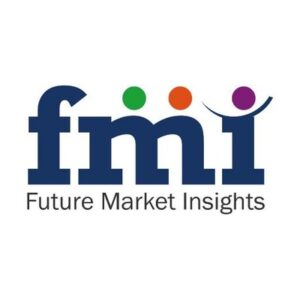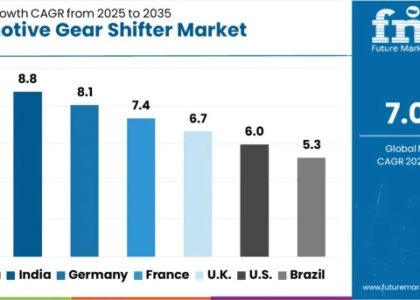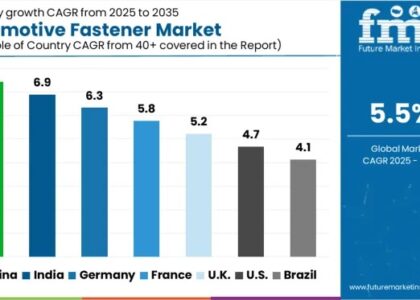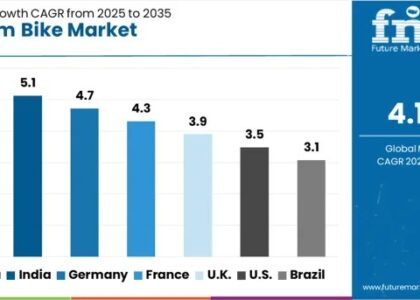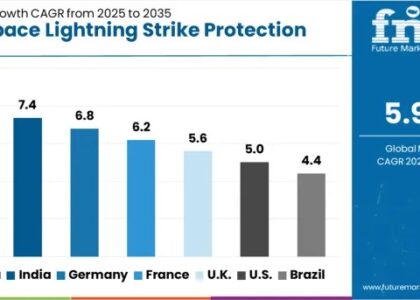In 2024, the non-woven fabric market size is estimated to be US$ 45.1 billion, with projections indicating a substantial increase to US$ 70.7 billion by 2034. The forecast period from 2024 to 2034 anticipates a notable surge in the market at a Compound Annual Growth Rate (CAGR) of 4.6%.
In Japan, the non-woven fabric market is set to flourish with an anticipated Compound Annual Growth Rate (CAGR) of 2.9% through 2034, propelled by the nation’s technological prowess. The adoption of advanced manufacturing technologies, coupled with continuous innovations in materials and production processes, ensures the production of high-quality non-woven fabrics. Notably, the market experiences a boost from the growing demand for elderly care and incontinence products, aligning with Japan’s aging population, where non-woven fabrics play a crucial role in the production of adult diapers and other incontinence management products.
Meanwhile, in India, the non woven fabric market is on a robust trajectory with an expected CAGR of 6.4% through 2034. Government initiatives promoting hygiene, healthcare, and sanitation act as significant catalysts for market growth. The surge in e-commerce activities further fuels demand for non woven fabrics in packaging solutions, owing to their durability and protective qualities. The modernization efforts within India’s textile industry enhance the efficiency and competitiveness of non-woven fabric manufacturing through the adoption of advanced technologies, contributing to the sector’s overall expansion.
Request Free Sample Report: https://www.futuremarketinsights.com/reports/sample/rep-gb-4012
Key Takeaways:
- High demand from various industry verticals strengthens the market prospects for non woven fabrics.
- Volatility and high costs of raw materials may stunt the target market growth.
- The non-woven fabric market in North America accounts for 15% of the global market share.
- Europe’s non-woven fabric market holds 30% of the total market share.
- Start-ups in this market are keen on developing additional product properties to boost the adoption rate of non-woven fabrics.
Competitive Landscape
- E.I. du Pont de Nemours & Co,
- Ahlstrom Corporation,
- Avintiv, Inc.,
- Kimberly-Clark Corporation,
- P.H. Glatfelter Co,
- Freudenberg SE,
- Suominen Corporation,
- Toray Industries Inc.,
- Albarrie, and
- others
are some of the major players in the non-woven fabrics market profiled in the full version of the report.
Leading market players are focusing on utilizing novel and innovative techniques to enhance product quality and durability. These firms are interested in developing new product lines and expanding their production capacities to strengthen their market position.
Recent Developments-
- In June 2020, Lydall invested in the new fine fiber melt-blown production line to meet the rising global demand for face masks. This new production line aimed at enabling Lydall to produce high-quality fine fiber melt-blown filtration media for N95, surgical, and medical face masks and significantly increase their supply and help alleviate the shortage of melt-blown materials, both in the US and internationally.
- In May 2020, Berry Global announced an expansion of its Meltex melt-blown capacity, with the addition of an asset to support the growing demand for face masks during COVID-19. The new line focused on the manufacturing of nonwoven protection materials and filter materials for premium FFP2 (N95) and FFP3 (N99) grade filter media.
Innovations Driving the Non Woven Fabric Market
Non-Woven Fabrics Market has witnessed a surge in innovations that have expanded its potential applications. These innovations include:
- Nano-technology Integration: Incorporating nanoparticles into non-woven fabrics has led to enhanced functionalities like antimicrobial properties, UV resistance, and advanced filtration.
- Electrospinning Techniques: Electrospinning has enabled the production of ultra-fine fibers, paving the way for non-woven fabrics with improved strength, breathability, and surface area.
- Sustainable Materials: The industry has embraced eco-friendly materials like biodegradable fibers and recycled plastics, addressing environmental concerns and promoting sustainability.
- Smart Non-Woven Fabrics: Integration of sensors and electronics into non-woven fabrics has resulted in “smart” textiles used in wearable technology, healthcare monitoring, and automotive applications.
Regional Analysis
Established eCommerce Channels in North America to Uphold the Adoption Trends
It is projected that North America will hold a significant share in the non-woven fabrics market. Currently, North America is holding 15% of the total non-woven fabrics market share.
Owing to the rapid economic development of this region and rising disposable income, there is a rising domestic demand for hygiene products. In addition to this, the online sales channel is a prominent part of the region’s economy, which generates high revenue for the market. All-in-all, North America is likely to have steady non-woven fabrics market growth in the upcoming years.
Ready to Learn About Our Approach? Explore Our Methodology: https://www.futuremarketinsights.com/request-report-methodology/rep-gb-4012
Key Market Segments in the Non-Woven Fabrics Market
By Polymer Type:
- Polypropylene (PP)
- Polyethylene (PE)
- Polyethylene terephthalate (PET)
- Wood pulp
- Rayon
- Others
By Function:
- Disposables
- Durables
By Application:
- Hygiene
- Medical
- Filtration
- Automotive
- Building & construction
- Others
By Technology:
- Spunbond
- Wet Laid
- Dry Laid
- Air Laid
By Region:
- North America
- Latin America
- Asia Pacific
- Middle East and Africa
- Europe
About Future Market Insights (FMI)
Future Market Insights, Inc. (ESOMAR certified, recipient of the Stevie Award, and a member of the Greater New York Chamber of Commerce) offers profound insights into the driving factors that are boosting demand in the market. FMI stands as the leading global provider of market intelligence, advisory services, consulting, and events for the Packaging, Food and Beverage, Consumer, Technology, Healthcare, Industrial, and Chemicals markets. With a vast team of over 5000 analysts worldwide, FMI provides global, regional, and local expertise on diverse domains and industry trends across more than 110 countries.
Contact Us:
Future Market Insights Inc.
Christiana Corporate, 200 Continental Drive,
Suite 401, Newark, Delaware – 19713, USA
T: +1-845-579-5705
For Sales Enquiries: sales@futuremarketinsights.com
Website: https://www.futuremarketinsights.com
LinkedIn| Twitter| Blogs | YouTube


